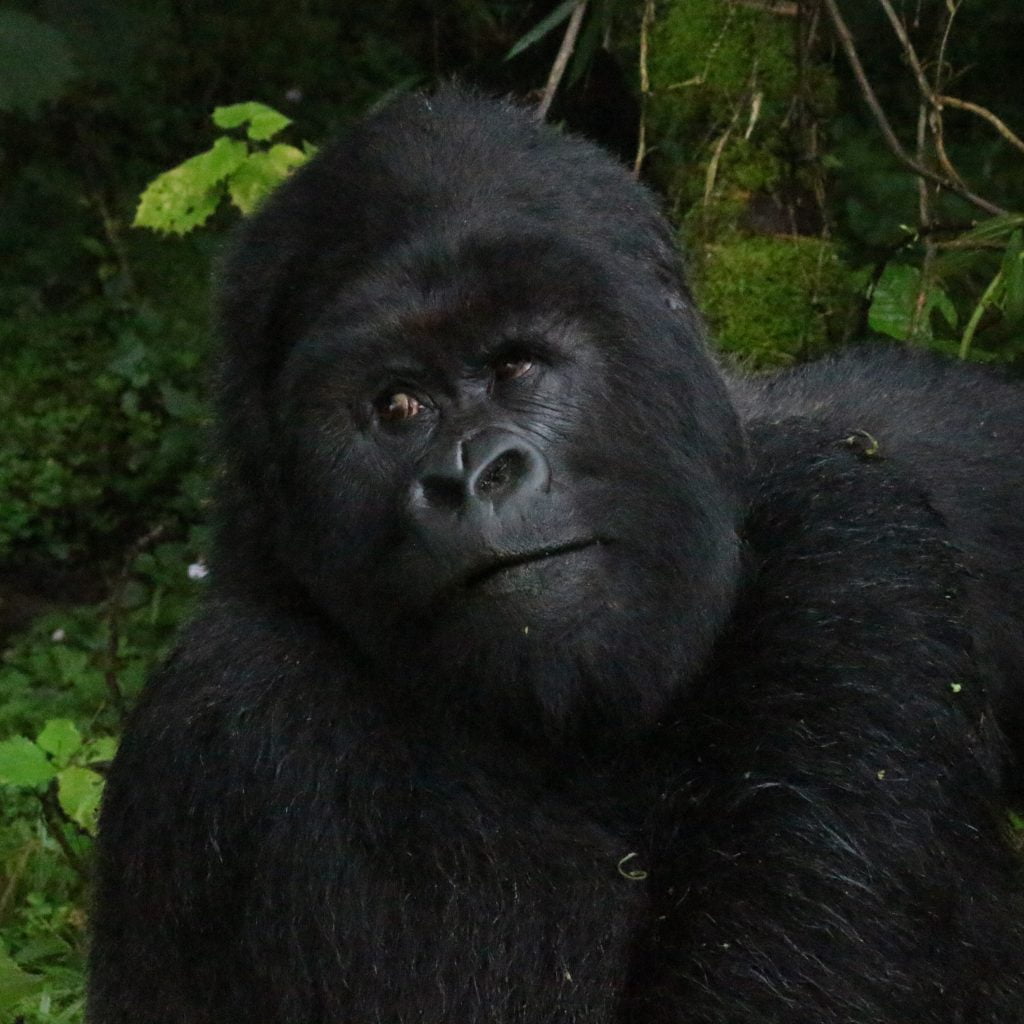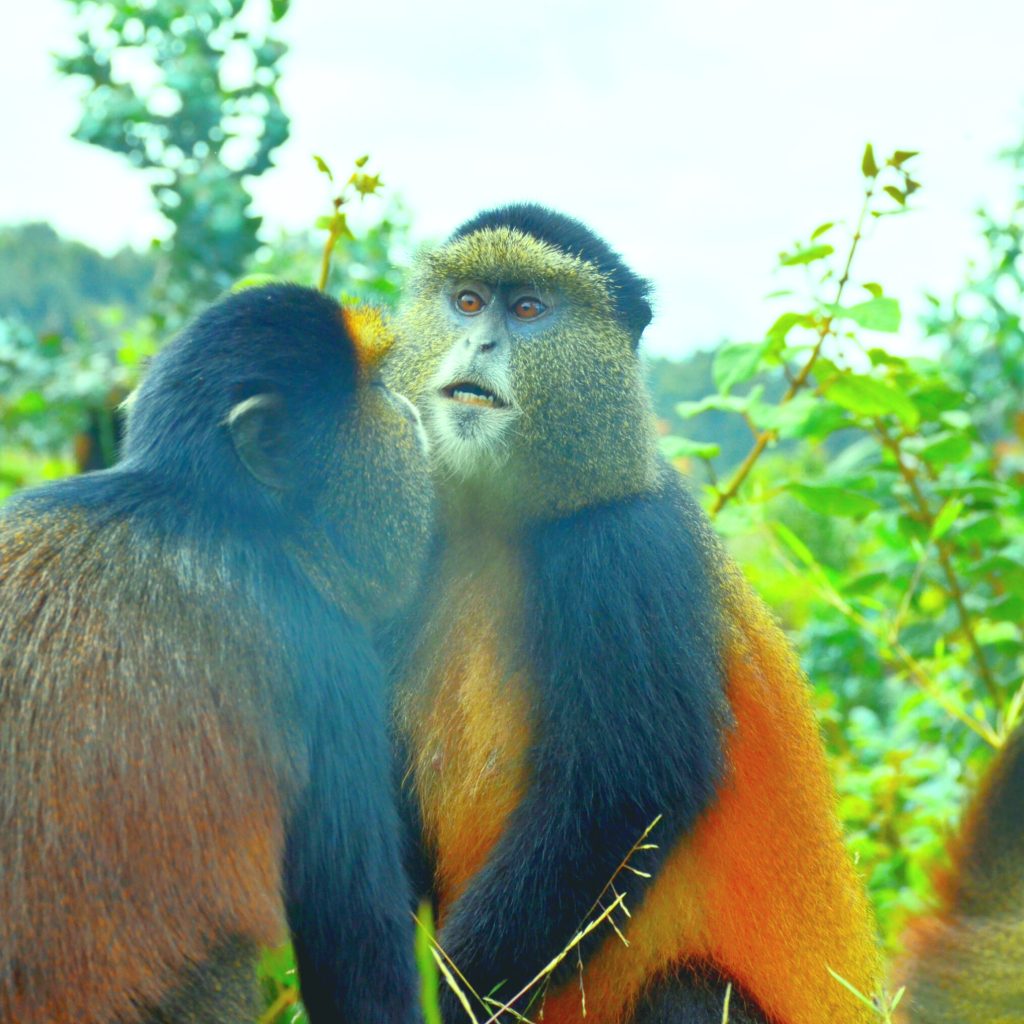What to know about primates tracking
Primate tracking is a guided hike through a forest to observe and learn about primates in their natural environment. It can be a moderate or challenging walk and requires following park rules for safety. Watching primates in their daily activities, such as fetching food or caring for young, can be a memorable experience. This helps to understand the animals and their behaviors better, take pictures without flash, and share information. The hike ends at the starting point. Book here/ plan now



Is it necessary to book primates tracking
Yes, booking primate tracking experiences is usually important for several reasons:
Planning and Preparation: Booking in advance allows you to plan your trip effectively, ensuring you have the necessary permits, accommodations, and transportation arranged well ahead of time.
Regulation and Conservation: Primate tracking experiences are often regulated to protect the animals and their habitats. By booking in advance, you contribute to responsible tourism practices and conservation efforts. it is advisable to book in advance, sometimes in high season slots sold out.
Peace of Mind: Knowing that your primate tracking experience is booked can alleviate stress and uncertainty, allowing you to focus on enjoying your trip.
Is primate tracking possible for everyone?
Yes, Primate tracking is possible for everyone. Sometime, It is a moderate hike that involves use of trails and off-trails thus tracking requires fitness. If you are sick you are not allowed to do primate tracking.
A porter is recommended for primate tracking
We are highly recommended to have a porter to carry your bags containing a bottle of water, rain gears, refreshment food, etc. The local porters are available from surrounding the park on 10$ per day excluding the tip. Socially and economically using the local porter is good for supporting the local community around the park and for conservation. Because all of them were poachers but now they are playing a big role in conservation.
Where can I prefer to do Primates tracking?
Tourists are used to do primates tracking in the equatorial region, especially in Rwanda, Uganda and DRC where they can find endangered mountain gorillas, chimpanzees and other primates. It is not easy to predict the preference of the tourist; most prefer to do primate tracking in Rwanda where which is the safest in the region and has luxury hotels, canopy walkway. Rwanda is also a smaller country, making it easier to travel around and access different national parks. The infrastructure in Rwanda is relatively well-developed, offering comfortable accommodation options and reliable transportation.
Each country has its unique characteristics and considerations when it comes to primate tracking.
Considering park permit for tracking for example Endangered Mountain gorillas park permit in Rwanda is 1500$ while in Uganda is 700$. For chimpanzee tracking, park permit in Rwanda is 250$ while in Uganda is 200$. However, Rwanda is the safest in the region. Tourist who wishes to cross those three countries they choice accordingly.
Uganda offers a more diverse primate tracking experience, with options to see both gorillas and chimpanzees. The country also has other national parks and reserves where you can track different monkey species. Uganda’s advantage lies in its affordability compared to Rwanda, and it also has a rich cultural heritage to explore.
The DRC is known as Congo, which is one of the most biodiverse parks in Africa. It is home to mountain gorillas, chimpanzees, and lowland gorillas. The DRC offers a more off-the-beaten-path experience, with fewer tourists compared to Rwanda and Uganda. However, the infrastructure and security situation in certain parts of the DRC can be challenging, so it requires careful planning and consideration of the current situation.
Is it safe to be closer to the primate as well as feed them?
Interacting with primates can be risky, and it is generally not safe to be too close to them or to feed them in the wild or in certain settings. While some primates may seem friendly or approachable, recommendable distance is 10m, it’s important to remember that they are still wild animals with unpredictable behavior. Here are a few reasons why it may not be safe to be close to or feed primates:
Aggression: Primates, even seemingly docile ones, can become aggressive when they feel threatened or are protecting their territory, young, or resources. Approaching them too closely or offering food can trigger defensive behaviors, leading to attacks or injuries.
Disease transmission: Primates can carry various diseases that can be transmitted to humans, Close contact, including feeding them, increases the risk of disease transmission, potentially leading to serious health issues.
Human dependency: Feeding primates can create dependency on human food sources, disrupting their natural foraging behaviors and potentially leading to conflicts with humans or other animals in search of food. Don’t feed them once you do, they will gradually develop a habit of seeking food from the tourist.
Conservation concerns: it is illegal and harmful to feed wild primates. It can disrupt their natural diet and behavior, interfere with their ecological roles, and contribute to human-wildlife conflicts. Due to conservation, discourage feeding wild animals to maintain their wild behaviors and ensure their long-term survival. If you encounter primates in the wild or at wildlife sanctuaries, it’s important to observe them from a safe distance, respect their space, and follow any guidelines or regulations provided by guide.
Endangered Mountain gorillas
Description:
Endangered Mountain gorillas are great apes which are critically endangered, just classified as being completely extinct due to habitat loss, disease and war. This makes them the rarest primates in the entire world. Mountain gorillas are much more very terrestrial and blacker in colour. Gorillas’ long, dense fur on their body and arms is an adaptation for surviving in sub-zero habitats up to 4500m. Adult males weigh 120-209kg, stand 160-196cm tall, and have a white/grey saddle on their back. Adult females weigh 70-100kg, are 140-160cm tall, and may turn grey with age. Gorillas have long arms compared to their legs, similar to other apes.
Habitat and behavior:
Mountain gorillas, found in Rwanda, Uganda, and the DRC, live in family groups headed by a dominant silverback male. They are primarily herbivorous and can eat up to 20kg of leaves, stems, and shoots per day. Females leave the group to join other groups after reaching maturity at 10 years, while males go on to start their own families. Adult males are aggressive when competing for females. They spend their day searching for food, playing, grooming, and building nests for the night using different plants.
Low land gorillas: Gorilla beringei graueri
Description: Western lowland gorillas are critically endangered; they can be differentiated from other gorilla species by are slightly smaller in size and shorter black fur comparative to other gorillas, their brown-grey coats and dark reddish-brown colour of the chests, a stocky body, large hands and a short muzzle. They also have wider skulls with more pronounced brow ridges, narrow face and smaller ears.
Habitat and behavior:
The western lowland gorilla is the most numerous and widespread of all gorilla subspecies however they are dramatically decreasing in number due to the poaching, habitat loss and disease. Populations can be found in Cameroon, the Central African Republic, Republic of Congo and Equatorial Guinea as well as in large areas in Gabon. They live in a family with social structure and peaceful creatures. Every family headed by one silverback with several females and their babies.
Chimpanzees
Description: Chimpanzees are intelligent great apes with brown to black fur covering their body except for their face, palms, fingers, and toes. They weigh 47-60kg and measure 120-150cm in height, with males being slightly heavier than females. Similar to humans, chimpanzees are profoundly social creatures, providing long-term care for their young and boasting lifespans exceeding 50 years. In essence, chimpanzees represent our nearest relatives, with approximately 98.5% of our genetic makeup in common and share many physical traits with us. Chimpanzees use tools and have complex communication skills.
Habitat and behavior: Chimpanzees are an endangered species found in tropical regions, including Rwanda, Senegal, Tanzania, DRC, and Uganda. They are quadrupedal and bipedal, spending time on the ground and in trees, and building nests to sleep in trees at night. They live in communities of 15-120 individuals, led by the strongest male, and defend their territories. They are omnivorous and eat meats, fruits, leaves, termites, and roots. The best time for observing them is around all year, but especially during the dry season when more trees are fruiting.
